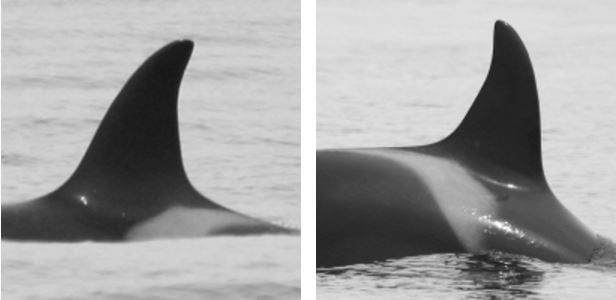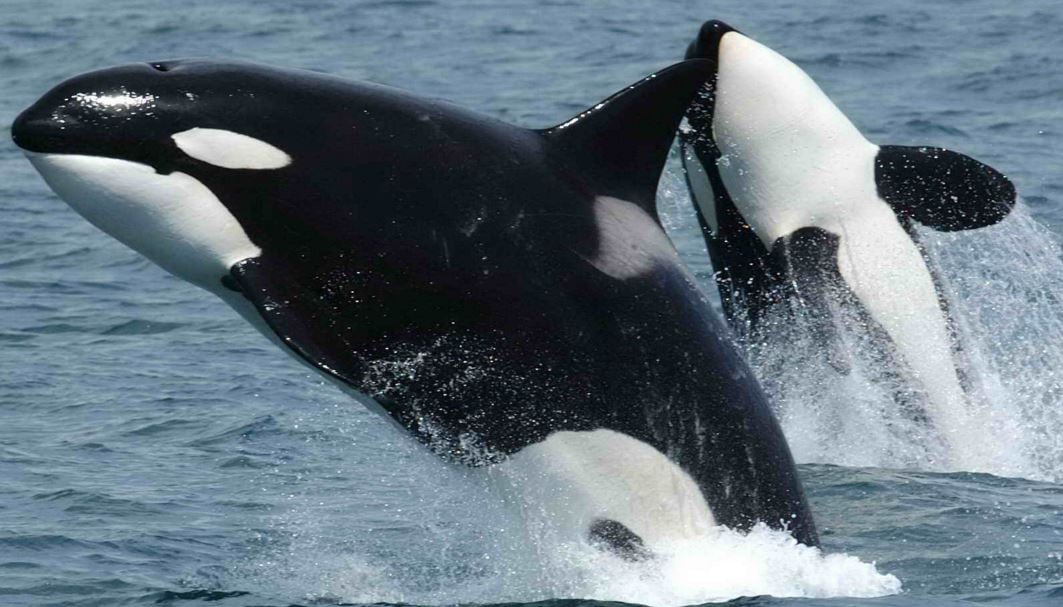The dead killer whale (orca) that was stranded on Tiree, a Scottish island, on 3rd January, has been identified as Lulu, a member of the West Coast Community of killer whales. This tiny and well-known group is the UK’s and Ireland’s only known resident population.
The death of Lulu increases fears that killer whales will become extinct around the waters of the British Isles (as residents).
The orcas that live in this region are unique, in that their diet consists mainly of other marine mammals. Another type of killer whale is sometimes seen in these waters, but they feed mainly on seals and fishes and travel over much greater distances.
 Lulu was found dead on Tiree, the most westerly island in the Inner Hebrides of Scotland. (Image: whaledolphintrust.co.uk)
Lulu was found dead on Tiree, the most westerly island in the Inner Hebrides of Scotland. (Image: whaledolphintrust.co.uk)
Lulu identified from photo database
Dr. Andy Foote, an orca specialist, and Dr. Conor Ryan of the Hebridean Whale and Dolphin Trust confirmed the identity of Lulu. They compared the dead whale’s distinctive eye and saddle patches, which are unique to each whale, to those in the Trust’s photo ID catalogue.
According to the Hebridean Whale and Dolphin Trust “Photos taken of the stranded orca by John Bowler, RSPB Scotland Tiree Officer were crucial to allow HWDT to identify the animal.”
Hebridean Whale and Dolphin Trust’s Sighting and Stranding Officer, Dr. Conor Ryan, said regarding the death of Lulu:
“It is particularly sad to know that another one of these killer whales, unique to the British and Irish Isles, has died. There may be as few as eight individuals remaining in this population, which has not produced calves since studies began.”
The Hebridean Whale and Dolphin Trust has been studying killer whales in the Hebrides using photo ID for the past twenty-four years.
Lulu last seen in 2014
Lulu was last photographed by the Trust from Silurian, its specialized yacht, off Waternish, a peninsula on the Isle of Skye, in July 2014. During that encounter she was seen with Moneypenny, another female, and John Coe, a large male.
 Two pictures of Lulu taken when she was alive. She was first catalogued by the Trust in 1995. The tip of Lulu’s dorsal fin is more pointy than the other females in its catalogue. (Image: whaledolphintrust.co.uk)
Two pictures of Lulu taken when she was alive. She was first catalogued by the Trust in 1995. The tip of Lulu’s dorsal fin is more pointy than the other females in its catalogue. (Image: whaledolphintrust.co.uk)
The charity encourages members of the public to come aboard Silurian to help monitor *cetacean species found in the Hebrides, where the waters are said to have one of the most diverse marine environments in Europe.
*Cetaceans refers to dolphins, porpoises and whales, of the order Cetecea.
Dr. Foote said:
“It is very sad to lose a member of this unique group. There are lots of potential contributing factors, many of them man-made. It may also be part of a very natural process.”
“By making this link between a stranded animal and its source population it makes it possible to investigate these factors.”
“It highlights the importance of the Hebridean Whale and Dolphin Trust, the Scottish Marine Animal Strandings Scheme and the members of the public that help by providing sightings, photographs and reporting strandings.”
The Scottish Marine Animal Strandings Scheme plans to conduct an examination of the dead whale within the next few days, in the hope of determining its cause of death.
 Killer whales are highly intelligent, extremely powerful, and sociable animals. (Image: Wikipedia)
Killer whales are highly intelligent, extremely powerful, and sociable animals. (Image: Wikipedia)
About Orcas
Orcas are huge animals. Females are between 5 and 7 metres long, while males can reach up to 8 metres – some very large ones measure 9.8 metres. They range in weight from three to six tons.
Part of this heavy weight is due to the mammal’s large amount of fat under the skin, which can be 10cm thick.
They are warm-blooded animals, and their body temperature is not that different to that of humans – between 36.4 and 38 °C. Their temperature allows them to live in cold water.
Their upper body is black, with white spots on the sides of the belly, distributed throughout the bottom. They have two horizontal white spots at the height of their eyes, which gives them an imposing and threatening look.
According to killer-whale.org, its dorsal fin is one of the most important parts of its anatomy. A large adult can have a dorsal fin measuring 1.8 metres high.
Scientists say their sense of hearing is highly developed, but not smell. We don’t know much about their sense of taste – in fact we don’t even know whether they have taste buds.
While they appear to have sharp vision, researchers are uncertain how developed this sense is.
Regarding how they communicate, killer-whale.org writes:
“Killer whale pods have a very complex communication system, and most components of it have not been deciphered by researchers yet. However, experts have reached some conclusions like that one pod produces a completely different set of sounds than other pods; thus, each individual can recognize the group where it belongs.”
“Such sounds are learned and transmitted from generation to generation among the members of the community and have been called dialects. Calves are born with a limited repertoire of sounds that slowly expand as they learn from their mother and other adults in the pod. The dialects are essential for the identification and cohesion within the group.”
BBC Video – Killer Whales
David Attenborough explains that killer whales are highly intelligent and extremely powerful animals that hunt in packs “A lethal combination that makes them the most formidable predators on the planet.”
